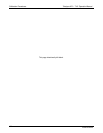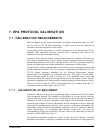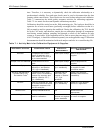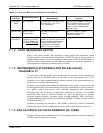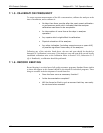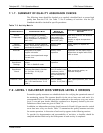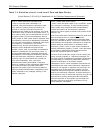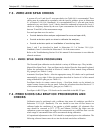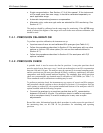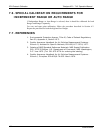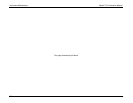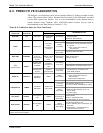
EPA Protocol Calibration Teledyne API – T101 Operation Manual
194
Single range selection. See Section 4.7.4 of this manual. If the instrument
will be used more than one range, it should be calibrated separately on
each applicable range.
Automatic temperature/pressure compensation.
Alternate units, make sure ppb units are selected for EPA monitoring. See
Section 4.7.7.
The analyzer should be calibrated on the same range for monitoring. If the AUTO range
mode is selected, the highest of the ranges will result in the most accurate calibration, and
should be used.
7.4.1. PRECISION CALIBRATION
To perform a precision calibration, the instrument set up:
Input sources of zero air and calibrated SO
2
span gas (see Table 6-1).
Follow the procedures described in Section 6.2 for analyzers with no valve
options or with an IZS valve option (Do not use the method defined in
Section 6.7).
Follow the procedures described in Section 6.5 for analyzers with Z/S
options installed.
7.4.2. PRECISION CHECK
A periodic check is used to assess the data for precision. A one-point precision check
must be carried out at least once every 2 weeks on each analyzer at an SO
2
concentration
between 0.08 and 0.10 ppm. The analyzer must be operated in its normal sampling mode,
and the precision test gas must pass through all filters, scrubbers, conditioners, and other
components used during normal ambient sampling. The standards from which precision
check test concentrations are obtained must be traceable to NIST-SRM (see Table 7-1).
Those standards used for calibration or auditing may be used.
To perform a precision check, the instrument set up; sources of zero air and SO
2
span gas
and procedures should conform to those described in Section 6.3 for analyzers with no
valve options or with an IZS valve option installed and Section 6.6 for analyzers with Z/S
options installed with the following exception:
Connect the analyzer to a precision gas that has an SO
2
concentration
between 0.08 and 0.10 ppm. If a precision check is made in conjunction
with a zero/span check, it must be made prior to any zero or span
adjustments.
Record this value. Information from the check procedure is used to assess the precision of
the monitoring data; see 40 CFR 58 for procedures for calculating and reporting
precision.
07266B DCN6485



